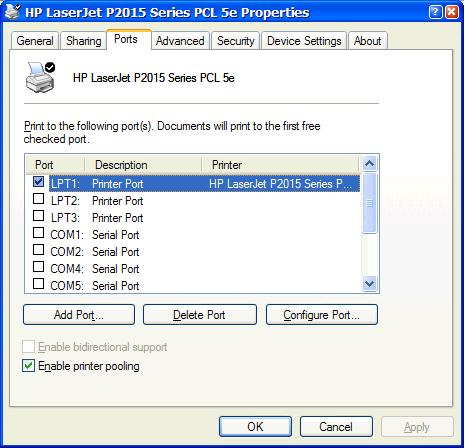

- LPT1 VIRTUAL PORT WINDOWS 10 INSTALL
- LPT1 VIRTUAL PORT WINDOWS 10 ZIP FILE
- LPT1 VIRTUAL PORT WINDOWS 10 SOFTWARE
- LPT1 VIRTUAL PORT WINDOWS 10 CODE

LPT1 VIRTUAL PORT WINDOWS 10 ZIP FILE
LPT1 VIRTUAL PORT WINDOWS 10 SOFTWARE
Prior to, there was no installer, so you had to install the software manually by downloading and installing InpOut32.
LPT1 VIRTUAL PORT WINDOWS 10 CODE
I’m not responsible for any damage done to your computer by using this software.įor sample code that describes how I detect the computer’s parallel ports in Parallel Port Tester, see my blog post: Detecting parallel ports and their I/O addresses in Windows. Be careful it might be possible to fry your parallel port if you hook the outputs up wrong. Prior to this, you needed to manually download and install InpOut32.Īny problems/questions/concerns? Please let me know in the comments below and I’ll try my best to help get you going.

32- or 64-bit Windows are both supported. Should work with 2000, XP, Vista, 7, 8, 10, 11, and the various newer server versions. Let’s get the requirements out of the way. I show separate values for the control register because what you write to the control register is not guaranteed to be what you read back. You can also choose whether to use the four control pins as inputs or outputs.įor people who are really interested, I also display the raw register values of the three standard parallel port registers. The circles representing input pins are automatically updated while you have the port selected, so you can easily test your inputs. Green represents on (high), black represents off (low). You can toggle parallel port outputs on or off by clicking on the circle representing the pin you want to change. If for some reason your port doesn’t show up in the list, you can manually enter the base address of your parallel port (e.g. I use several methods to discover parallel ports and their I/O ranges, so you shouldn’t need to enter them manually. Simply locate your parallel port in the list that appears in the bottom right. I wanted a tool compatible with newer versions of Windows, both 32-bit and 64-bit. Oh, and a lot of the existing tools don’t work with newer versions of Windows. At best, they supported custom parallel ports but required you to manually look up the I/O address range of the card. At worst, they only supported the standard parallel port I/O addresses that new motherboards don’t have anymore. Several other test programs exist, but I wasn’t happy with their interfaces, and a lot of them weren’t prepared to easily handle PCI/PCI Express/ExpressCard parallel ports. Just a simple utility where you can set the output value of each output pin and read the value of each input pin. After playing around with a ton of parallel port cards in an attempt to figure out Willem programmer compatibility, I decided it would be useful to write a parallel port tester program.


 0 kommentar(er)
0 kommentar(er)
